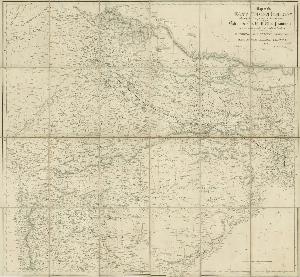George Stephenson
George Stephenson
สถานที่: Wylam
เกิด: 1781
ความตาย: 1848
ชีวประวัติ:
While renowned as the 'Father of Railways', George Stephenson, a British civil engineer and mechanical engineer, left an indelible mark on the Industrial Revolution. However, his legacy extends beyond the realm of railways, touching upon the world of art, albeit indirectly.
Early Life and Engineering Contributions
Born in 1781 in Walsingham, Northumberland, George Stephenson's life was marked by an innate curiosity for mechanics. His chosen rail gauge, often referred to as the 'Stephenson gauge', laid the foundation for the standard gauge used globally.
The Artistic Connection
Though not a painter himself, George Stephenson's influence on the art world is seen through his contributions to the Industrial Revolution. The era's artistic movements, such as the Arts and Crafts movement, were influenced by the societal changes he helped bring about.
- Key Art Movement Influenced by Industrial Changes: The Arts and Crafts Movement, led by figures like William Morris, was a response to the industrialization of society, focusing on handcrafted, unique pieces. Explore more about William Morris at [https://Wikioo.org/Art.nsf/O/A@D3C7F9](https://Wikioo.org/Art.nsf/O/A@D3C7F9) - William Morris Gallery
- Notable Art Pieces Reflecting the Era: The Hay Wain by John Constable, a prominent figure in British landscape painting, reflects the changing landscapes of the Industrial Revolution. Learn more about John Constable at [https://Wikioo.org/@/John_Constables](https://Wikioo.org/@/John_Constables)
Legacy and Impact on Art
- Enduring Innovations: The standard gauge, a testament to George Stephenson's ingenuity, has outlasted the centuries, influencing not just railways but also the broader scope of industrial and artistic developments.
- Artistic Reflections of Industrialization: The Iron Bridge, a symbol of the Industrial Revolution, is an early example of cast iron in bridge construction, reflecting the era's innovative spirit. Discover more about The Iron Bridge at [https://Wikioo.org/Art.nsf/O/A@D3BUYP](https://Wikioo.org/Art.nsf/O/A@D3BUYP) - The Museum Bridgwater Town Hall
In conclusion, while George Stephenson's direct contributions to the art world may seem minimal at first glance, his influence on the Industrial Revolution and its subsequent impact on artistic movements cannot be overstated. His legacy serves as a reminder of how technological innovations can ripple across various aspects of society, including the arts. References:
- [https://Wikioo.org/Art.nsf/O/A@D3C7F9](https://Wikioo.org/Art.nsf/O/A@D3C7F9) - William Morris Gallery - [https://en.wikipedia.org/wiki/List_of_British_innovations_and_discoveries](https://en.wikipedia.org/wiki/List_of_British_innovations_and_discoveries) - List of British innovations and discoveries

